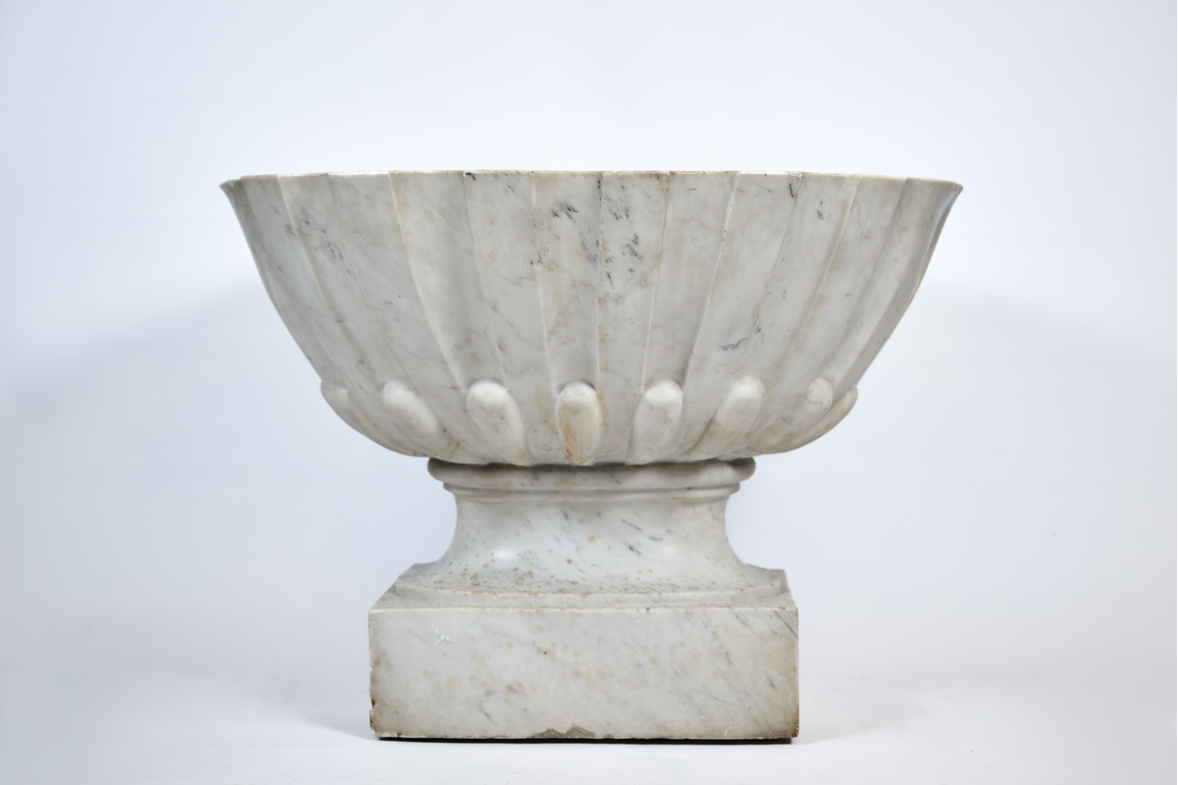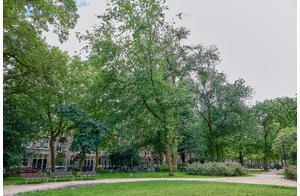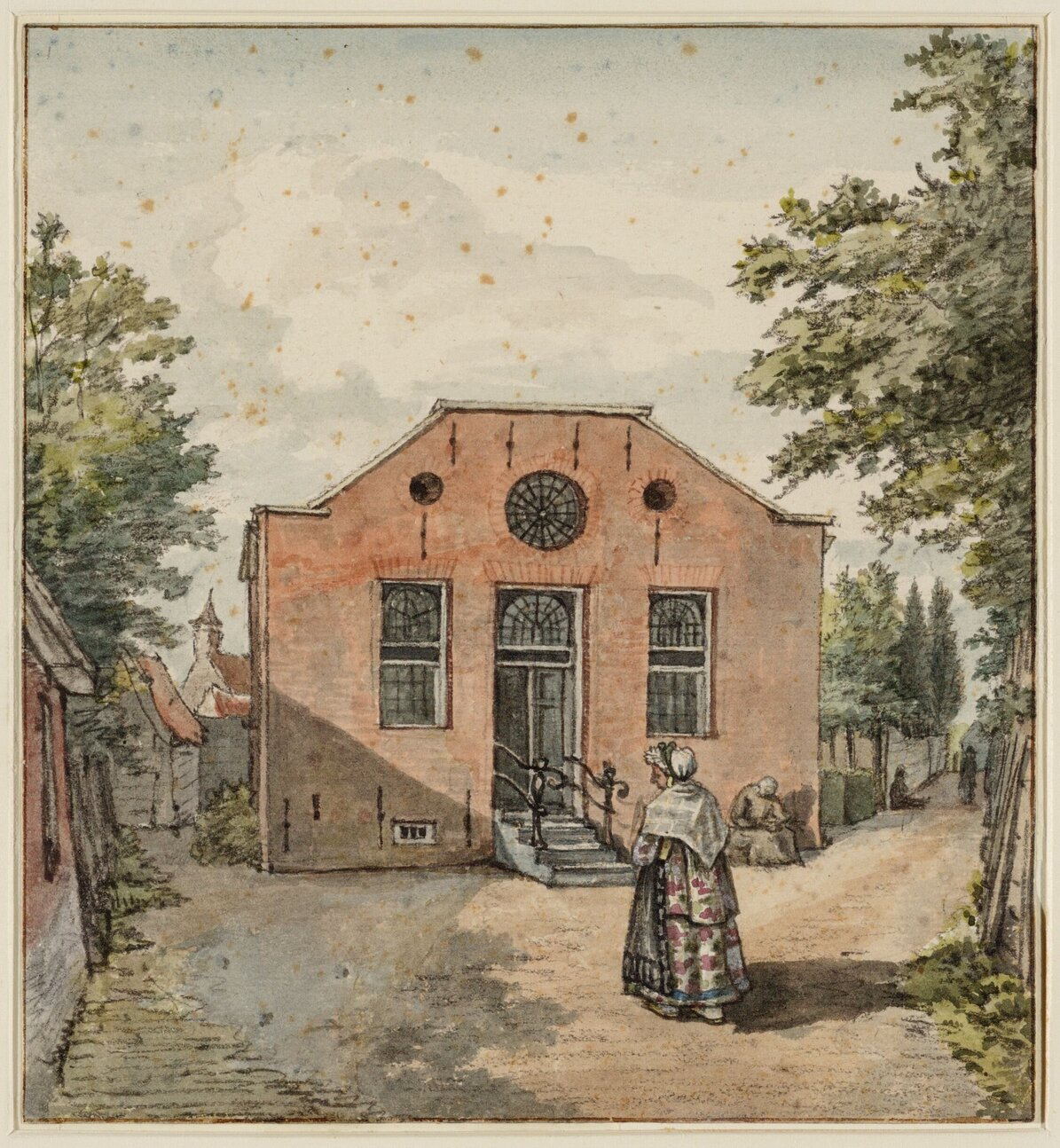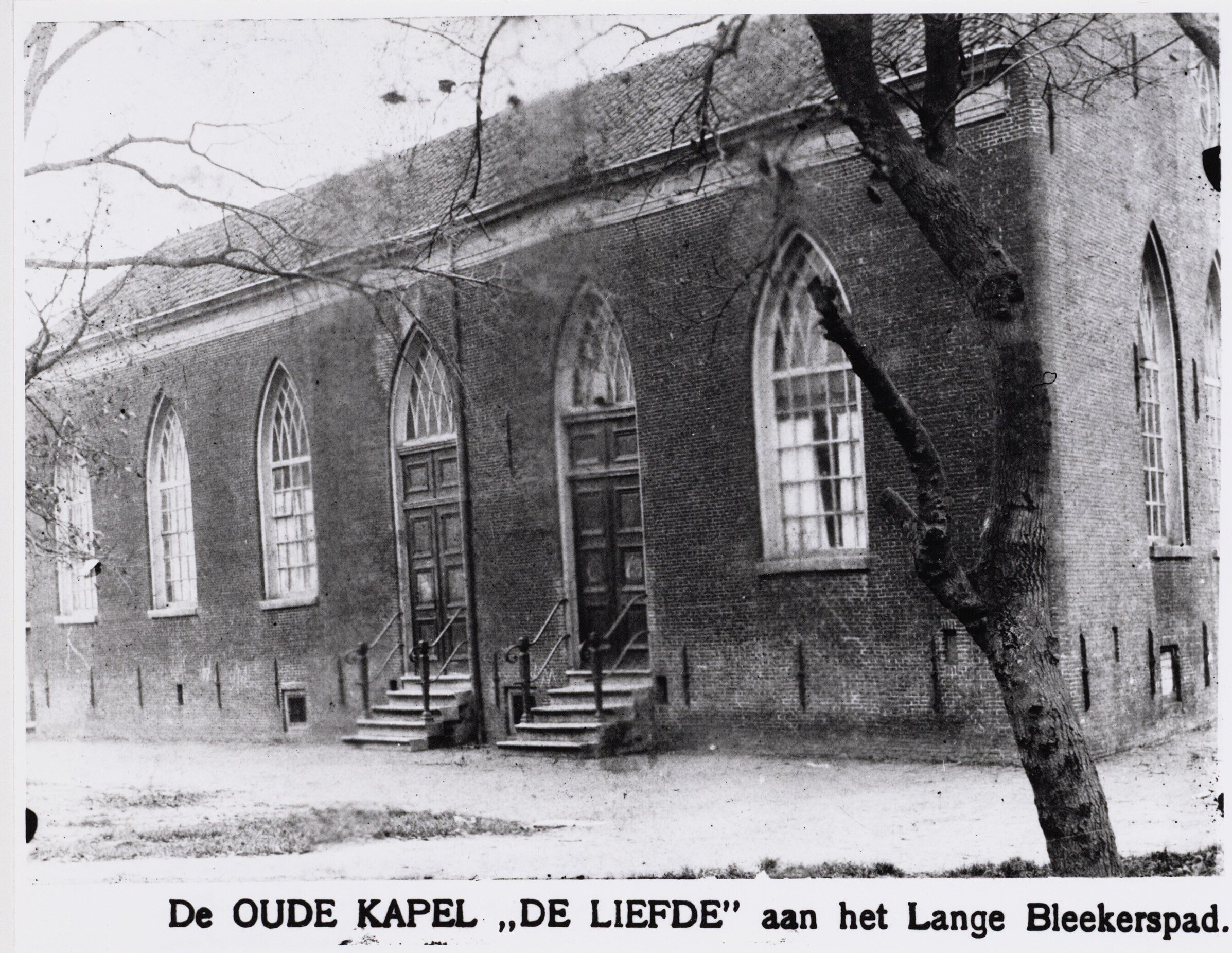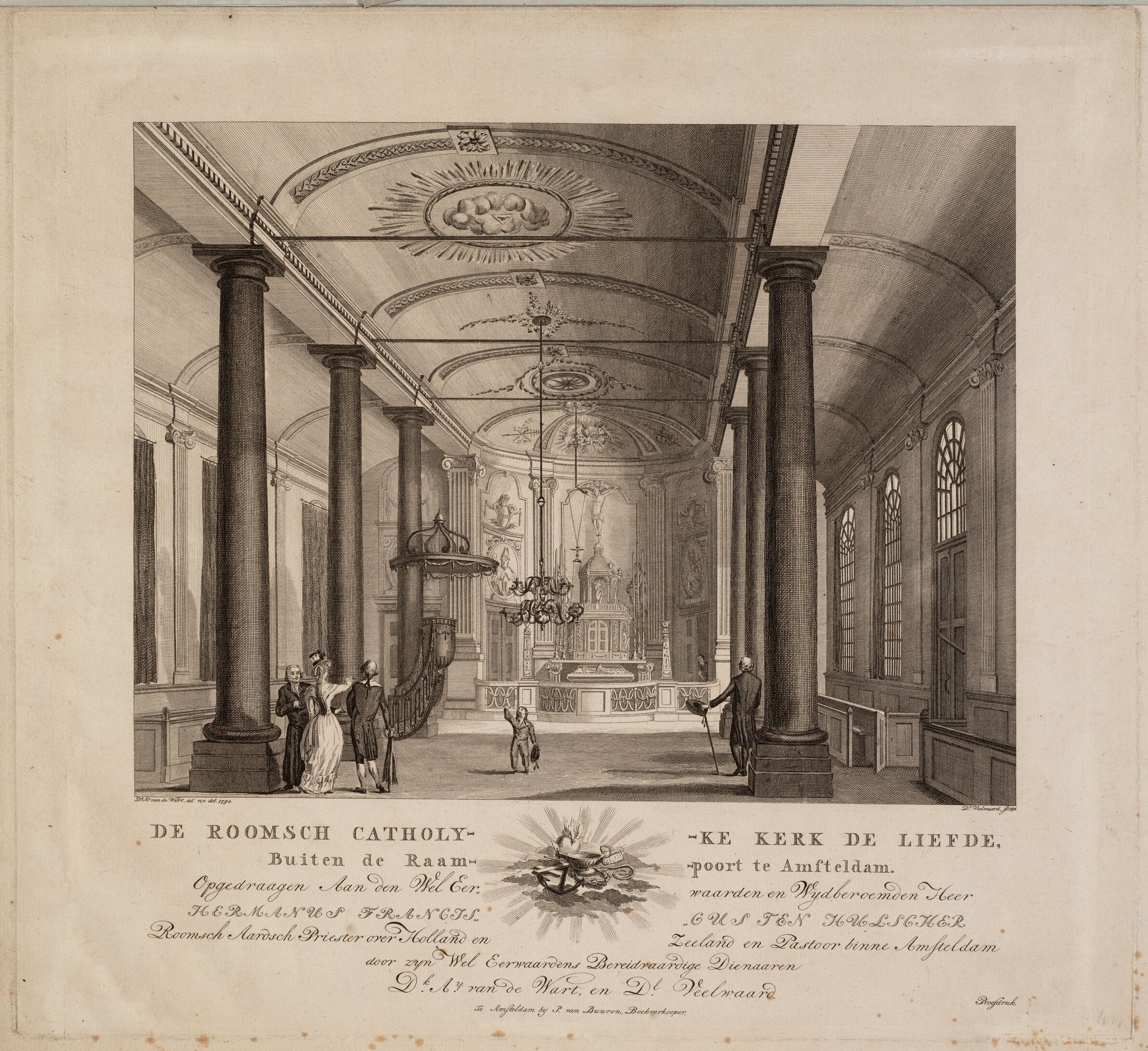For the Catholic farm workers, many of them immigrants, much improves when they get permission to build their own little church outside the city walls.
Location
De Liefde
Bilderdijkpark 1
Type
Hidden church
Religious community
Roman Catholic Church
Object
Carrera marble baptismal font
Maker and date
Maker unknown
Ca. 1786
Visit
Not on display at location
Imagine a walled city with a mill every few hundred metres. The fields outside the walls are green but soaking wet. You see canals, ditches, boats and more mills grinding away water, but also sawing wood. There are paths leading to small houses. Farm workers are busy sowing the wet soil. Here on the west side of Amsterdam live Catholic farm workers. They are mostly immigrants from neighbouring countries, looking for work and a better future.
It is 1784. The people have just received good news: they are allowed to build a small hidden church outside the city walls. However, the little church must not stand out from the Protestant city council. Therefore, the roof cannot be too high and there will be no tower with church bells. However, the building will have beautiful windows and a beautiful interior.
hidden church
Building in which hidden religious services were held in the Dutch Republic (1588-1795). Christian denominations outside the Calvinist church, such as Catholics, Lutherans, Mennonites and Remonstrants, had to practice their religions in hidden churches.
That a small church may be built is a great improvement in the living conditions of the farm workers. Now, if any of them is dying at night, no priest can reach the poor soul to give the necessary spiritual assistance. After all, the Raampoort is locked at night. From Amsterdam's inner city, no one can get out. A church and a priest outside the fortress can solve this problem. But enough money has to be raised. In the Catholic hidden churches inside the city walls, fortunately, the collection is given generously. It manages to raise fl. 23,000 so work can begin. On 15 May 1786, the little church De Liefde was consecrated and dedicated to Sint Nicolaas, the patron saint of Amsterdam.
The beautiful white baptismal font, made of precious Carrera marble, is often used. The population outside the Raampoort is growing rapidly. The Catholics among them all go to De Liefde. The rural character around the church - with its many small houses, mills and water - remains intact well into the 19th century.
Birgit Büchner
Director Our Lord in the Attic Museum
Last edited
December 16, 2024
Baptismal font, maker unknown, marble, 140 x 160 cm. Collection Museum Ons' Lieve Heer op Solder.
Exterior: photography Robert Westera.
Churchyard and R.K. church "de Liefde", Kerkepad 76 seen from northeast, Gerrit Lamberts, drawing, 1816. Collection Stadsarchief Amsterdam.
The Old Chapel "De Liefde" on the long Bleekerspad, maker unknown, photograph, ca. 1911. Collection Stadsarchief Amsterdam.
The Roman Catholic Church De Liefde, Buiten de Raampoort at Amsteldam, P. van Buuren, D. Veelwaard, D.A. van de Wart, engraving, 1790, Collection Atlas Dreesmann, Stadsarchief Amsterdam.
Catalogus van de veiling te houden op donderdag 7 juni 1990 des avonds 7.00 uur. Inventaris van KERK DE LIEFDE Bilderdijkstraat 23 Amsterdam (Veilinghuis De Zwaan 1990).
Drubbel, A., Tweehonderd jaar statie "De Liefde" 1784-1984 (Amsterdam 1984).
Holtkamp, C.P.M., De Statie "De Liefde" buiten de Raampoort (Amsterdam 1934).


